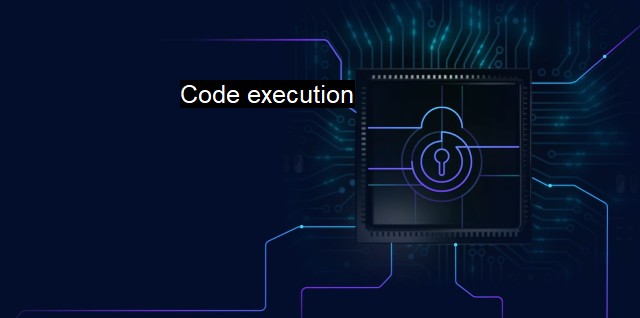What is Code execution?
Understanding Code Execution in Cybersecurity and Antivirus: An In-Depth Examination
Code execution, in the realm of cybersecurity and antivirus software, is a critical process that provides a fertile ground for many potential security exploits indulged by cybercriminals or malware creators. code execution is the act of machine running or executing a series of instructions to complete a task or make a decision. These identical sets of instructions are bound together to form what is known as a program or software.In legitimate software and applications, execution of these operations is necessary for the interfacing with the operating system, the execution of specific tasks, data processing and even in the depiction of user interfaces. Various software and applications, from web browsers, word processors to video games, all require an execution of code to function effectively.
However the concept of code execution takes a herculean significance. While all software must execute lets of actual instructions to function, the difference has hangs on the nature of the codes being executed. Malicious code execution is when harmful, unauthorized commands are conducted without the user's consent or knowledge. The source of these malicious codes could range from worms, viruses, and trojans, which are programmed to execute malicious tasks that compromise the security and functionality of the target computer system.
Viruses, for instance, often use code execution to spread from one system to another, altering or destroying data, and potentially creating backdoors for hackers to exploit. Trojan horses, on the other hand, shield their malevolent designs behind the guise of legitimate programs or disguise themselves as enticing downloads or links that prompt the unsuspecting user to activate the malicious code execution. Meanwhile, worms exploit network vulnerabilities to multiply and spread across multiple systems, causing widespread damage and disruption.
Antivirus software functions as a potent guard that monitors, counters, and curbs malicious code execution in a system. They consist of sets of codes devised to detect, neutralize, remove, and protect against numerous threats that entail malicious code execution.
When a piece of malicious code is detected, the antivirus software dives into action by halting its execution and secluding and isolating the take it off script from the rest of the system before it could inflict damage. Most antivirus software work rounds the clock, perusing the system and its connections for potential threats persistently.
Antivirus software are designed with definitions that help 'recognize' the properties of known malware, enabling efficient scanning and instantaneous response against potential threats. As cyber threats are persistently evolving, these definitions are regularly updated to stay toe-to-toe with new kinds of malware or the upgraded versions of existing threats. When a new malicious script is identified, these definitions are amended to contain the signatures of the new threat, empowering the antivirus software to identify and counter similar threats in the future.
The aftermath of malicious code execution can be menacing ringing from loss of delicate content, crumbling down of infrastructure, to breaching of user privacy and identity theft. Hence, adopting robust antivirus software that continually peruses the system and ward off malevolent codes plays a critical role in bolstering the digital defense mechanism.
The field of cybersecurity never springs a dull moment as the continuous rivalry between cybercriminals concocting newer stratagems of breaking down the security walls and the security watchdogs breeding innovative countermeasures brews incessantly. Surely, as cyber threats continue to metamorphosize, with malevolent code execution being one of their key assets, antivirus software and cybersecurity measures must evolve in tandem not just to resist these threats, but more importantly, to anticipate them.

Code execution FAQs
What is code execution in the context of cybersecurity?
Code execution in cybersecurity refers to the ability of malicious code to run on a system without the user's consent or knowledge. This can result in a variety of attacks, including malware infections, data theft, and remote access to the compromised system.How do antivirus programs detect and prevent malicious code execution?
Antivirus programs use various techniques to detect and prevent malicious code execution, such as behavior-based detection, signature-based detection, and sandboxing. They monitor system activity and network traffic to identify suspicious behavior and block any malicious code from running on the system.What are some common ways attackers can exploit code execution vulnerabilities?
Attackers can exploit code execution vulnerabilities in a variety of ways, such as through email phishing campaigns, drive-by downloads, and social engineering. They may also exploit vulnerabilities in software or compromised websites to execute malicious code on a victim's device.How can individuals and organizations protect themselves from code execution attacks?
To protect against code execution attacks, individuals and organizations should keep their software and operating systems up to date, use security software such as antivirus programs, and practice safe browsing habits. They should also educate themselves and their employees about the risks of social engineering and phishing attacks, and regularly back up important data to prevent data loss in the event of an attack.| | A | | | B | | | C | | | D | | | E | | | F | | | G | | | H | | | I | | | J | | | K | | | L | | | M | |
| | N | | | O | | | P | | | Q | | | R | | | S | | | T | | | U | | | V | | | W | | | X | | | Y | | | Z | |
| | 1 | | | 2 | | | 3 | | | 4 | | | 7 | | | 8 | | |||||||